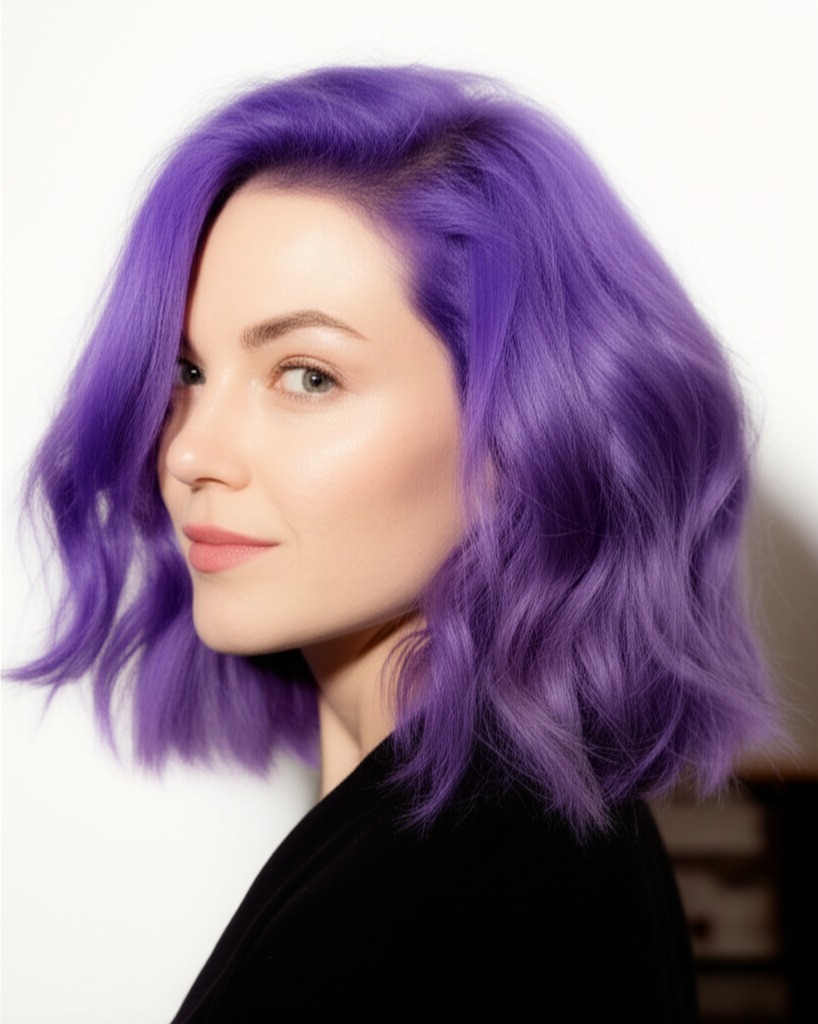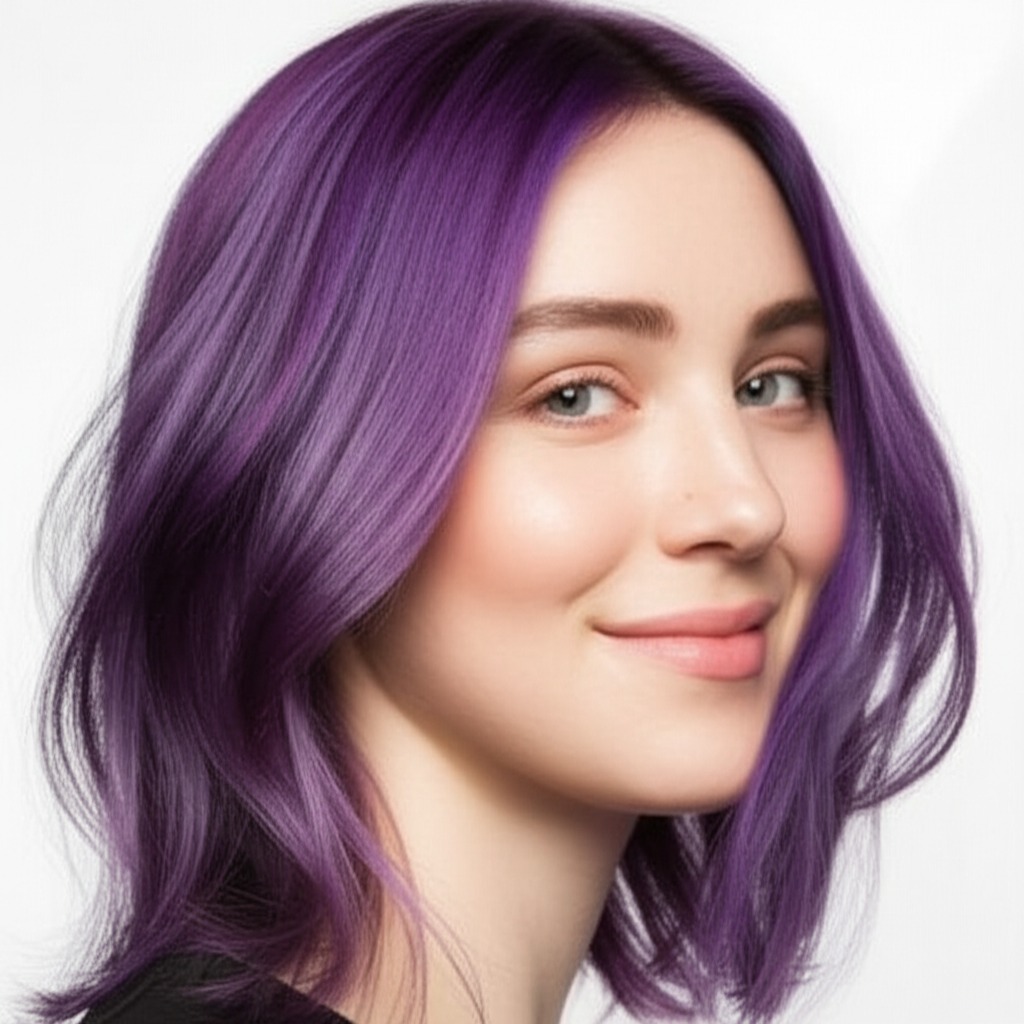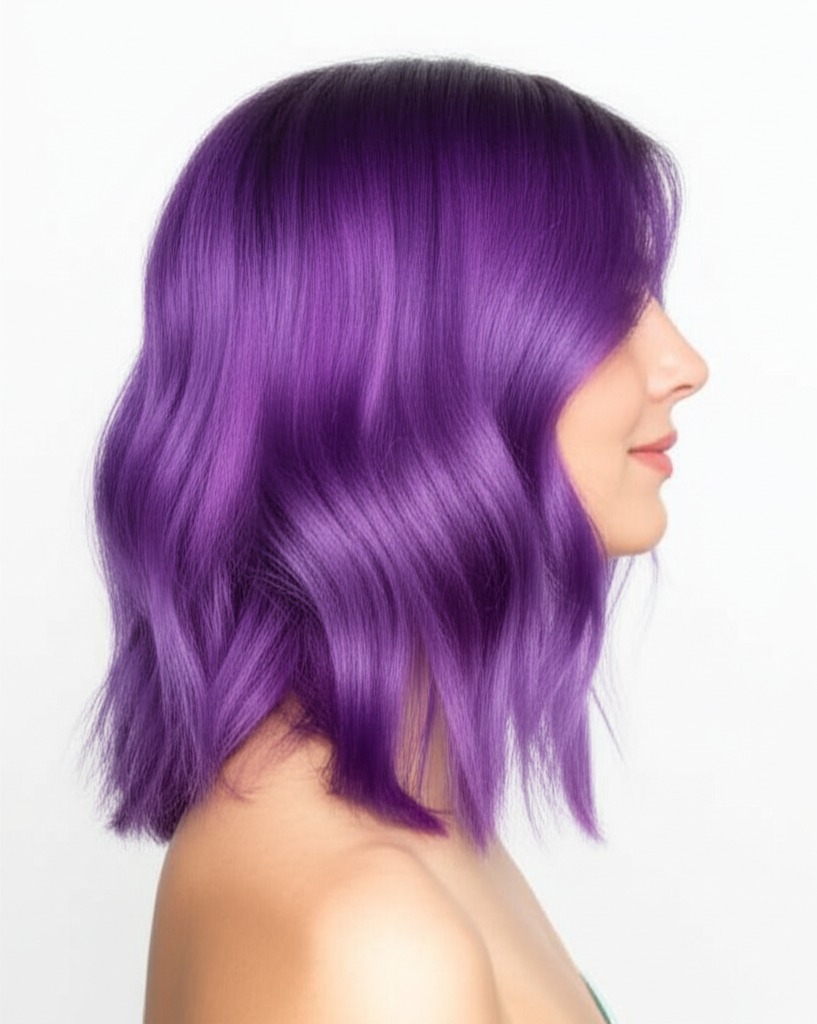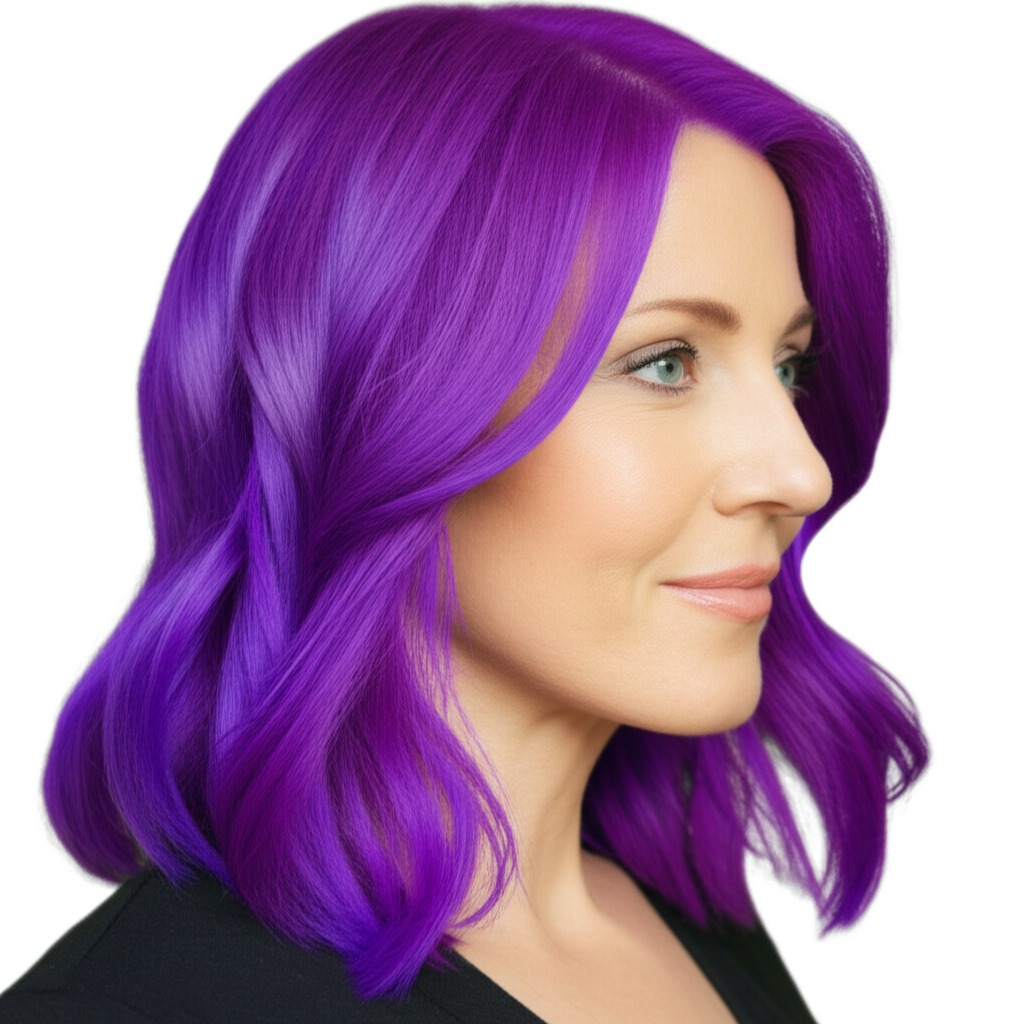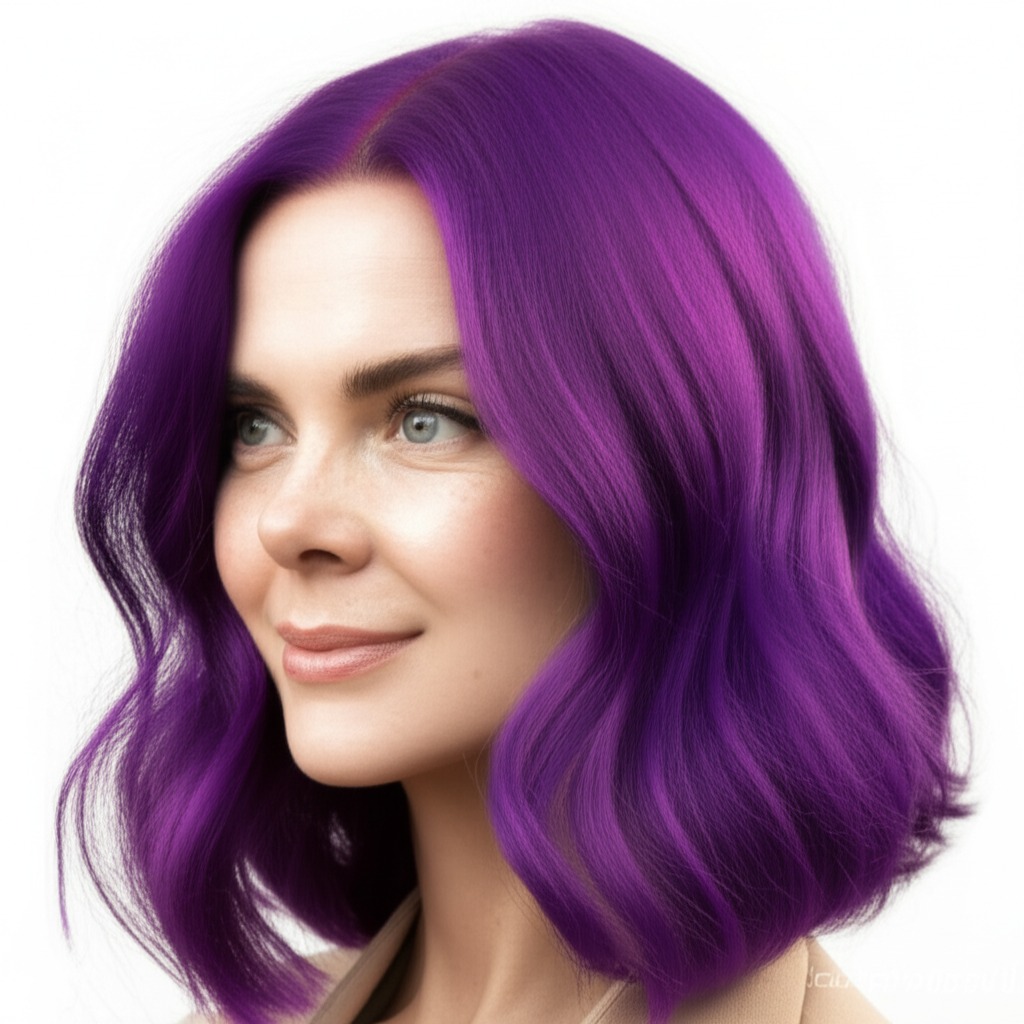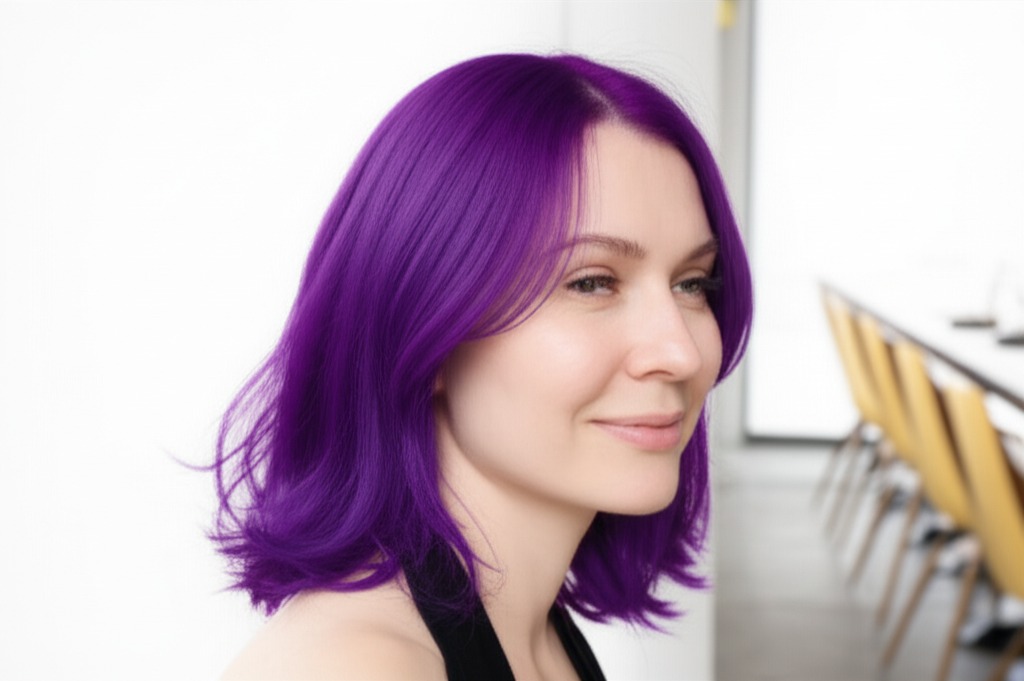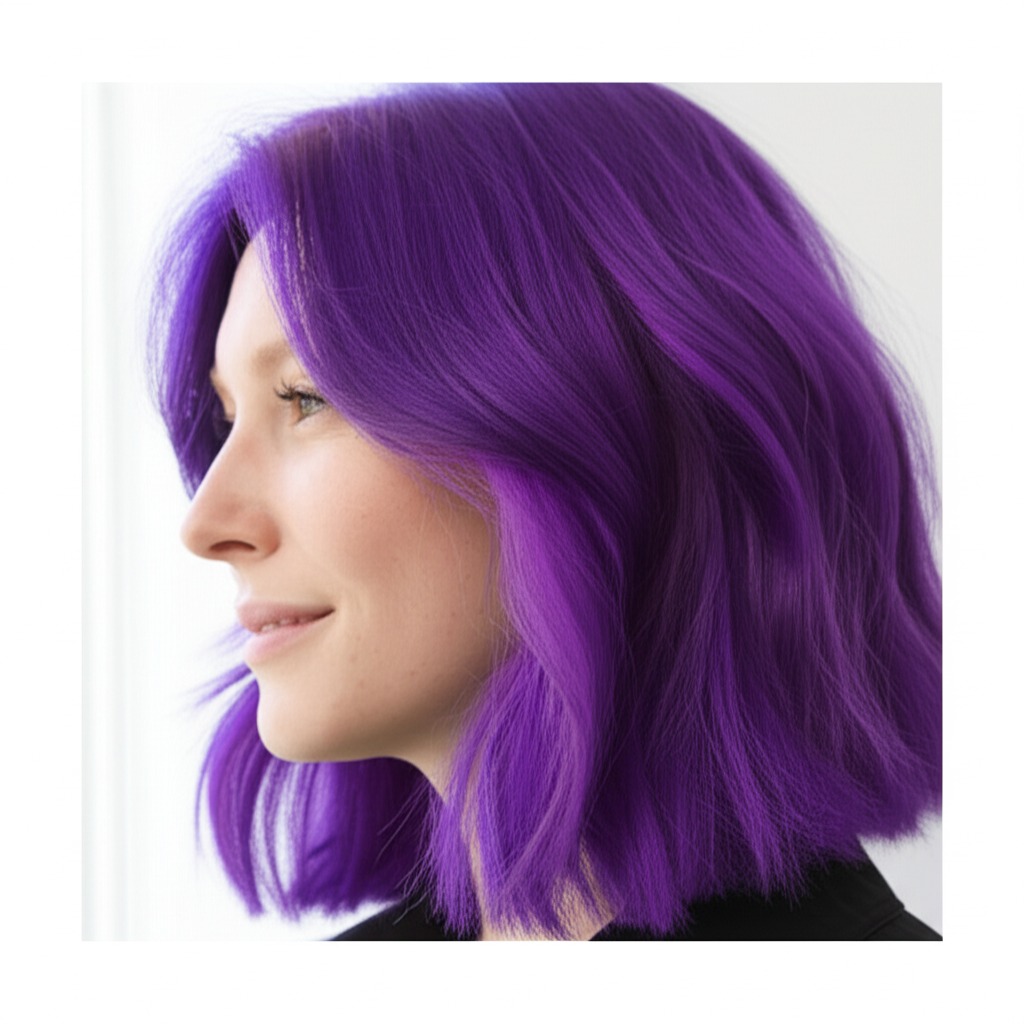#Dive into Violet Hair Color: A Guide for Gorgeousness
Violet hair – it’s captivating, creative, and undeniably cool! But pulling off a truly stunning violet shade requires more than just picking a box dye. This guide breaks down everything you need to know about rocking this beautiful color, from understanding the nuances of different violets to keeping your locks looking their best. Let's get started!
#1. Understanding Violet Shades: Depth & Undertone
Violet isn’t one single color; it’s a family! It ranges from soft lavender pastels to deep, moody plums. The key is understanding undertones and levels:
- Undertones:
- Cool Violet: Think icy lavender or periwinkle. These violets have blue or purple undertones – they reflect cool light.
- Neutral Violet: A more balanced violet with a mix of both cool and warm tones. These are often easier to wear across different skin tones.
- Warm Violet (Rare): While less common, warmer violets lean towards reddish-purple hues. They require careful consideration as they can clash with certain complexions.
- Levels: Levels refer to the darkness or lightness of your hair color. A lower number indicates a darker shade (e.g., 1 is jet black), while higher numbers are lighter (e.g., 10 is light blonde). Violet typically works best on levels 7 and above, as it needs a lighter base for the pigment to show properly.
- Level 7-8: Soft violets and lavenders look beautiful here.
- Level 9-10: Bright, vibrant violet shades really pop with this level of lightness.
#2. Who Does Violet Flatter?
Violet is a statement color, but it can be flattering on many! Here's how to determine if it’s right for you:
- Skin Tone & Undertone:
- Cool Skin Tones (pink or blue undertones): Cool violets will enhance your complexion and create a harmonious look. Think fair skin with pink cheeks, olive skin with cool undertones.
- Neutral Skin Tones: You’re often lucky! You can usually pull off most violet shades, but experiment to see what you like best.
- Warm Skin Tones (yellow or golden undertones): Be cautious. Warm violets might make your skin look sallow. If you have warm undertones, consider a neutral violet or consult with a stylist who can tailor the shade to complement your complexion.
- Eye Color: Violet hair often enhances eye color!
- Blue Eyes: A cool violet will make blue eyes sparkle.
- Green/Hazel Eyes: A more muted, neutral violet can bring out the green or gold flecks in hazel eyes.
- Brown Eyes: Almost any violet shade can work with brown eyes – it’s all about finding the right intensity and undertone.
- Natural Hair Level Starting Point: Ideally, you want to be level 7 or lighter. If your hair is darker, bleaching will be required (and that takes time & care!).
#3. Technique Options: From Subtle to Bold
How you apply violet can drastically change the final look.
- Single-Process Color: A solid application of violet all over – best for those wanting a bold statement and starting from a lighter base.
- Highlights/Lowlights: Adding pops of violet throughout your hair creates dimension and softness. Great for blending into darker bases or adding subtle color.
- Babylights: Very fine, delicate highlights—a super-subtle way to introduce violet tones.
- Gloss/Toner: A gloss adds shine and vibrancy while a toner adjusts the undertone of your existing color – perfect for refreshing faded violet or dialing in the exact shade you want.
- Balayage-Effect: Hand-painted highlights create a soft, blended look with less harsh lines. This is ideal for lower maintenance and a more natural appearance.
- Solid vs. Dimensional: Solid violet provides maximum impact. A dimensional approach (highlights/lowlights, balayage) adds depth and movement while making the color appear softer.
#4. Maintenance & Longevity: Planning Ahead
Violet fades faster than many other colors due to its pigment structure. Here’s what you need to know:
- Wash Frequency: Aim for washing your hair only 2-3 times a week, or even less if possible!
- Toner Refresh: Expect to tone your violet every 4-8 weeks (or sooner!) depending on how quickly it fades. This keeps the color vibrant and prevents brassiness.
- Root Growth Pacing: Discuss with your stylist whether you want to maintain a solid, all-over look or allow for more root visibility between appointments.
- Budget/Time Planning: This isn't a "wash & go" color! Factor in salon visits (every 6-12 weeks), toner touch-ups, and specialized at-home products. Cost can range from $150 - $400+ per salon visit depending on location and stylist expertise.
#5. Seasonality & Pairing with Cuts: Style it Right!
- Seasonal Tweaks:
- Spring/Summer: Lighter, pastel lavenders feel fresh and airy.
- Fall/Winter: Deeper plums and richer violets evoke a sense of drama and sophistication.
- Haircuts That Complement Violet:
- Bob & Lob: A sharp bob or lob showcases the color’s vibrancy and creates a modern, chic look.
- Long Layers: Adds movement and dimension, allowing the violet to catch the light beautifully.
- Pixie Cut: A bold choice for short hair – a vibrant violet pixie is undeniably edgy!
- Occasion Picks:
- Work/Daytime: Opt for a more muted, toned-down violet or balayage effect.
- Evening: A brighter, more saturated violet will make you stand out.
- Weddings: Consider a soft lavender or lilac – romantic and ethereal!
#6. At-Home Care: Protecting Your Investment
Proper aftercare is crucial for preserving your violet color.
- Sulfate-Free Shampoo & Conditioner: Sulfates strip away pigment, causing the color to fade quickly.
- Clarifying Cadence: While sulfate-free is key, occasional clarifying (every 4-6 weeks) removes buildup from styling products. Don’t overdo it!
- Heat Protection: Always use a heat protectant spray before using any hot tools (blow dryer, straightener, curling iron).
- Color-Safe Styling Products: Look for products specifically designed for color-treated hair.
- Product Checklist: Sulfate-free shampoo & conditioner, color-safe leave-in conditioner, heat protection spray, purple shampoo/mask (for toning), clarifying shampoo (occasional use).
#7. Common Pitfalls: Avoiding Color Disasters
- Brassiness: Violet can pull brassy tones from the hair if not properly prepped or toned. A good stylist will know how to combat this.
- Banding: Uneven color application, often due to inconsistent product saturation during bleaching (if needed). A skilled stylist is essential!
- Patchiness: This happens when the color doesn’t apply evenly – usually from uneven bleach or poor product distribution.
#8. Pros & Cons: Weighing Your Options
Pros:
- Unique and Eye-Catching: Violet hair makes a statement!
- Versatile (with right technique): Can be adapted to suit different styles and personalities.
- Can Enhance Features: Flattering for various skin tones and eye colors when chosen correctly.
Cons:
- High Maintenance: Requires regular toning and specialized care.
- Fade Risk: Violet pigment fades quickly, especially with frequent washing or sun exposure.
- Bleach Required (often): Achieving the desired level of lightness often necessitates bleaching, which can damage hair if not done properly.
#9. Salon Consultation Script: Setting Expectations
Before committing to violet hair, a thorough consultation is key! Here are some questions your stylist should ask you (and prompts for you to consider):
- "What shades of violet appeal to you? Can you show me examples?"
- "What’s your natural hair color and level?"
- "Have you previously colored your hair? If so, what products were used?"
- "Are there any areas of concern regarding damage or sensitivity?"
- “How much time are you willing to dedicate to at-home care?”
- "Let's discuss realistic expectations about the process, maintenance, and potential challenges."
#10. FAQs: Violet Hair Specifics
- Does violet hair look good on dark skin? Absolutely! Deeper, richer violets like plum or eggplant can be stunning against darker complexions.
- How long does violet color last? Typically, the initial color lasts 4-6 weeks before noticeable fading occurs. Toner touch-ups are needed every 4-8 weeks to maintain vibrancy.
- Can I dye my hair violet without bleaching? It's possible with a semi-permanent dye on level 7+ hair, but the result will be more subtle and less vibrant.
- What’s the best purple shampoo for violet hair? Look for shampoos specifically designed to neutralize brassiness in purple tones – these are generally effective for maintaining violet color.
- Will violet hair damage my hair? Bleaching (if required) can cause damage, but proper care and conditioning can minimize it.
- Can I do violet highlights on my own at home? It's risky! Highlights require precision and expertise to avoid banding or unevenness. Professional application is highly recommended.
Embracing violet hair is a bold and beautiful choice – with the right knowledge, preparation, and care, you can rock this stunning color with confidence!

